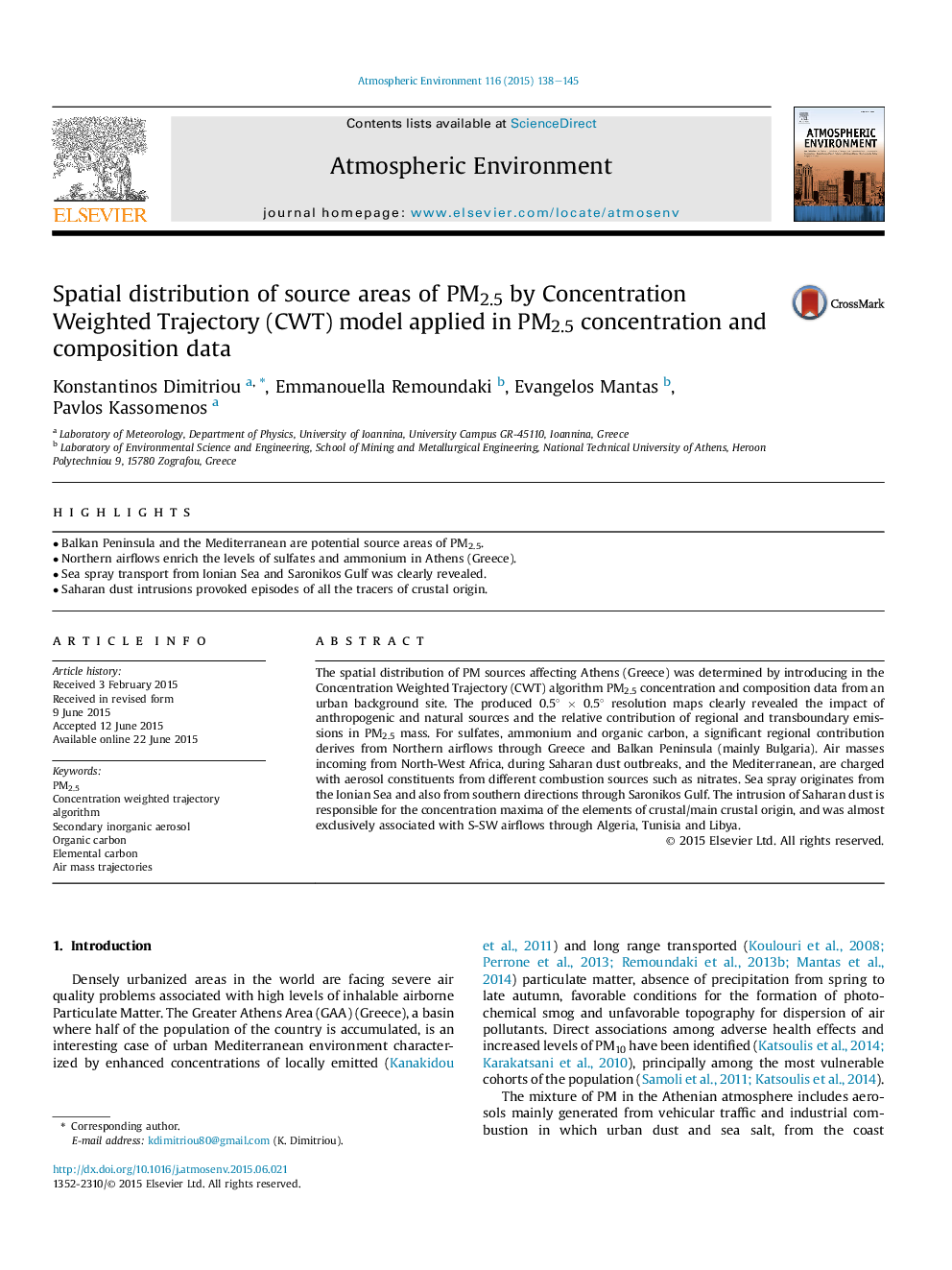| Article ID | Journal | Published Year | Pages | File Type |
|---|---|---|---|---|
| 4438123 | Atmospheric Environment | 2015 | 8 Pages |
•Balkan Peninsula and the Mediterranean are potential source areas of PM2.5.•Northern airflows enrich the levels of sulfates and ammonium in Athens (Greece).•Sea spray transport from Ionian Sea and Saronikos Gulf was clearly revealed.•Saharan dust intrusions provoked episodes of all the tracers of crustal origin.
The spatial distribution of PM sources affecting Athens (Greece) was determined by introducing in the Concentration Weighted Trajectory (CWT) algorithm PM2.5 concentration and composition data from an urban background site. The produced 0.5° × 0.5° resolution maps clearly revealed the impact of anthropogenic and natural sources and the relative contribution of regional and transboundary emissions in PM2.5 mass. For sulfates, ammonium and organic carbon, a significant regional contribution derives from Northern airflows through Greece and Balkan Peninsula (mainly Bulgaria). Air masses incoming from North-West Africa, during Saharan dust outbreaks, and the Mediterranean, are charged with aerosol constituents from different combustion sources such as nitrates. Sea spray originates from the Ionian Sea and also from southern directions through Saronikos Gulf. The intrusion of Saharan dust is responsible for the concentration maxima of the elements of crustal/main crustal origin, and was almost exclusively associated with S-SW airflows through Algeria, Tunisia and Libya.
